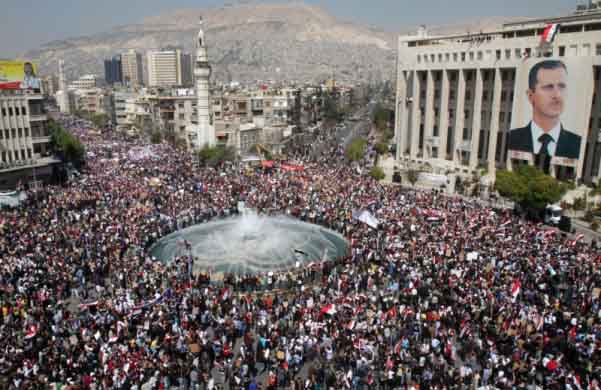Background
The Syrian civil war started when the whole Arab world was experiencing the so-called ‘Arab Spring’, some protestors in the Syrian cities namely Darra and Homs got hostile with the police forces that caused many civilian deaths. The aim of the protests was primarily to address socio-economic issues in the Syrian society. However, the armed insurgency that arose from the unarmed protests grew into a full-on civil war. The arms of the rebels who are more commonly known as the Free Syrian Army (FSA) got smuggled in from neighbouring countries Turkey and Jordan. The FSA with financial support from Gulf Arab countries such as Saudi Arabia, Qatar, UAE along with prominent Western countries and Turkey.
Also, other militant groups such as Jaish Al Islam were funded by Saudi Arabia and their Gulf allies, but later the ties were cut as Russian diplomacy convinced them to do so. This was reflected as Saudi Arabia struck notable financial deals with Moscow and Beijing in the previous year. As a result, Jaish Al Islam joined the coalition of pro-Turkish militia outfits. Subsequently, the FSA quickly joined forces with Al-Qaeda, Al-Nusra and eventually Daesh (ISIS) in their pursuit of overthrowing the President in Damascus Dr. Bashar Al-Assad. The Syrian territory eventually got divided into 3 factions controlled by FSA, Daesh and the Syrian government working along with the Syrian Democratic Force (SDF) the Kurdish armed group. This later changed as Russia was formally asked to join in assistance of the Government in 2015, most of the Syrian territory was recovered by the Syrian Arab Army (SAA) the official Syrian military.
Hybrid War and International interests
Syria remains a strategically important country as the historical grounds of Damascus the capital of the former Islamic Empires and with bordering the oil-rich neighbours and with access to the Mediterranean sea places Syria in a strategic position for Oil trade and many other interests. As the war-ravaged on there has been direct involvement from the Lebanese militant group Hezbollah and Iranian Revolutionary Guards who have assisted their ally President Bashar Al-Assad throughout the conflict. Contrarily, the FSA outfit received heavy support from Western countries namely, USA, France, and UK along with Turkey who has all supplied weapons and equipment for their war against the government in Syria. The Syrian government has had a traditionally anti-Western stance as being a revolutionary socialist government they have had close ties with the historic USSR and now its successor the Russian Federation. As a result of close ties with the USSR, Syria allowed then USSR to build a Naval base in Tartus, Syria along the coast of the Mediterranean sea. This is a liability in the eyes of NATO as this gives access to Russian naval force in the heart of the Mediterranean sea.
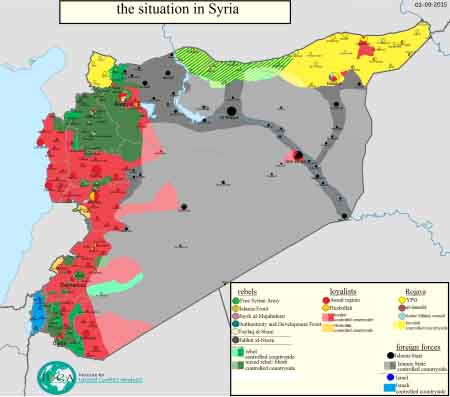
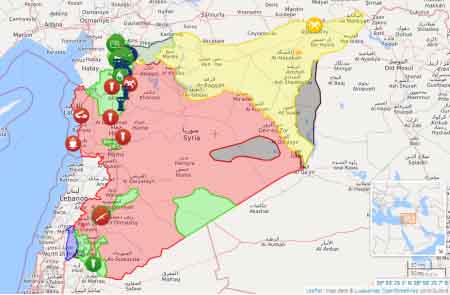
FSA operates in a coalition with various militant outfits, namely, Ahrar al-Sham, Jaish Al-Islam, Tahrir Al-Sham, Al-Nusra Front, Syrian Liberation Front and many other splinter groups who have all worked at some point in coalition with the FSA against the government in Damascus. The FSA, unlike traditional military bodies, are not united under a structural hierarchy, there have been splinter groups that emerged from all of these notable militant groups who are often regarded as terrorist organisations by the international community. These groups have fought each other on various occasions and are backed by different donors mainly from the Gulf states and Turkey. It can be presumed that the Western interest in ousting President Assad is primarily to gain access to this area of regional importance. A ‘regime change’ or in other words establishing a friendlier government would allow pipelines that planned by the Gulf countries to supply their resources into Europe through Turkey and Syria opposed to that particular project. As a reply, Syria supported the Iranian proposed pipelines to be built as an alternative to the Gulf one. This rather explains one the significance of Syria in the region and possibly the external interests in the country.
Israel, on the other hand, has claimed the Syrian territory Golan Heights, which Israel occupied in the 1967 war and Syria eventually recaptured it, however, now it remains in Israeli control. Therefore Israel has interest in the conflict in Syria as well, also reports published by Haaretz (Israeli news agency) suggested the FSA was receiving direct medical aid from the Israeli controlled Golan Heights and possibly military aid as well. Israel also routinely bombed SAA’s positions and they have argued that they were targetting Hezbollah positions in Syria whom Israel has a conflict with, notably since the 2006 Israel-Lebanon War. USA along with UK and France have also routinely carried out air strikes on Daesh and also on the SAA, in some instances US Air Force bombed the SAA positions which were followed up by Daesh advancements.
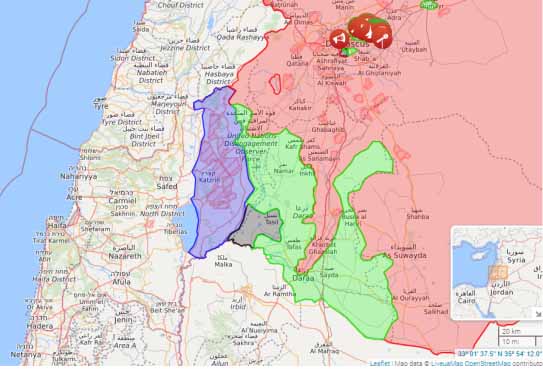
Media Manipulation
As the Civil War broke out, the Western-dominated media establishment were quick to portray Assad’s forces as the culprit and violators of Human Rights. They have quickly poised a position of a condemnation of the SAA and its fight against a rather foreign funded insurgency within their territory. There have been images floating around the media that depict children as the sufferers of SAA and Russian ‘aggression’. However, often it has been proven to be false and manipulated.
There have been cases when BBC and The Guardian used images from Iraq and recycled the image in order to portray the Syrian conflict, this was debunked by the British media outlet The Telegraph. Also the case of the Syrian boy Omran who was famously rescued by the White Helmets with bruises on his forehead, were found by the RT documentary crew who went in search of the boy in Aleppo and interviewed his father only to find out the boy was taken from his home to be taken photographs of in a hospital which later became viral.
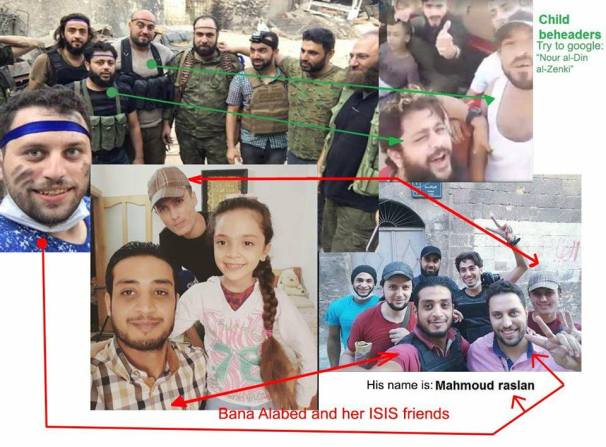
Additionally, there have been images that are surfacing the internet that suggest the White Helmet have staged fake rescues in order to receive publicity. This was famously portrayed as the official Twitter of the White Helmets posted a video of the members carrying out the Mannequin challenge which was trending at the time. This embarrassing howler further damaged their credibility as a reliable source. In addition to that, there are images of White Helmet members beheading a Syrian boy on video, there are images of those who are affiliated with this organisation also waving Al-Qaeda flag after a successful attack. The White Helmets are one of the main sources of the Western Media and Al Jazeera who have covered the Syrian Civil war from the beginning.
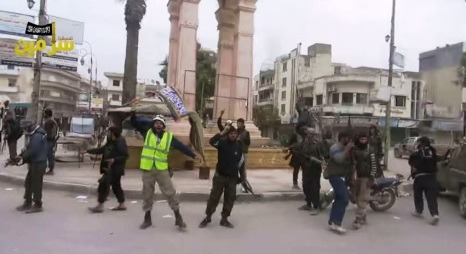
In an Al Jazeera documentary, where a journalist visits a Daesh-held area in Syria. Later as warnings appear from the Daesh soldiers of an Air attack from the government, the White Helmet members are seen in the background proving their links with terrorist outfits. Along with various other controversial events regarding this body which was nominated for a Nobel Peace prize portrays the vast amount of misinformation that has been surfacing. The conflict has deep interests from the major Western players as well as its neighbours.
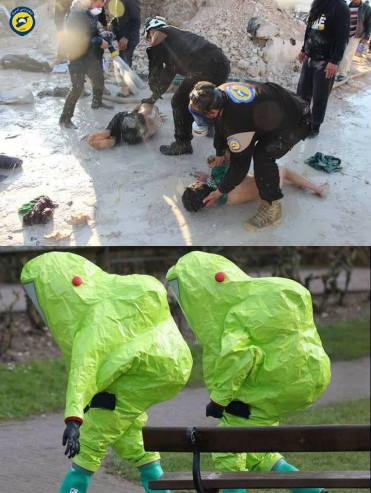
As the Syrian crisis is still far from being over, there has been progress made by the government and its allies in recovering majority areas under government control. However, the conflict may yet take another twist as Turkey officially entered the conflict last month against the Syrian Democratic Forces (Kurdish armed group) who have been working with Syrian government as well as the USA in the fight against Daesh. Turkey with its domestic problems with the Kurdish minority and its political entities have entered Syrian territory to directly combat with the SDF.
The SDF was also aided by the USA in their fight against Daesh. However, with the very recent involvement of a major US ally Turkey, the SDF have moved away from the Daesh frontlines (in the Deir al-Zour province) to focus on their fight against Turkey. This may seem counteractive as the USA supposedly supporting the SDF in their fight against Daesh, but, also at the same time allowing Turkey to attack that same organisation.
The SDF has successfully managed to recapture a vast amount of territories from Daesh’s control in the past 3 years. This shows the importance of SDF in the Syrian conflict and the eventual defeat of Daesh. Russia being the major power broker in this conflict has a difficult situation on their hands as Turkey who has cooperated with Russia in the recent times, have joined the conflict against a side which was instrumental in the defeat of Daesh. However, it seems Russia will opt to play a mediating role in the fight between SDF and Turkey, in order to avoid getting involved in this fight.
Conclusion
With vested interests in Syria, many different governments and private organisations have gotten involved in this humanitarian crisis. Some have fueled the fire that burns Syrian society and some have attempted to assure their interests in the region through Hybrid/Proxy war. All in all, this has caused an approximately 151,000 civilians deaths and 13.5 million as refugees. The war is being fought on multiple fronts and has prolonged for 7 years, a catastrophe that requires a quick resolve. The interests of the foreign players seem to be quite high as many resources were expended in this particular conflict. Therefore, in order to truly understand the situation in Syria, it isn’t enough to just follow the news narratives, but it is a necessity to do further research which may reveal some of the concealed parts of this puzzle.
The article was first appeared on the Qutnyti.

BA in International Business and International Relations (Dual Honours at Keele University, 2018) with Interests in International affairs, history and economics. Editor and founder of Qutnyti.

